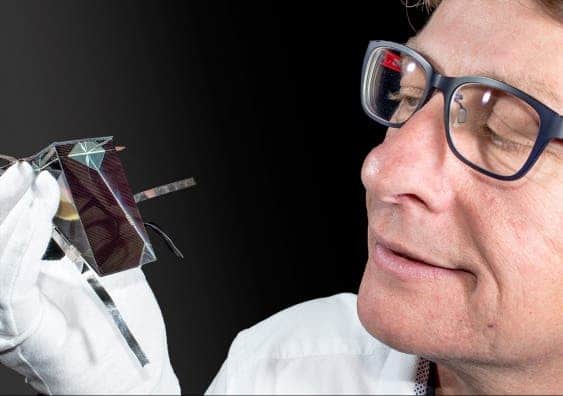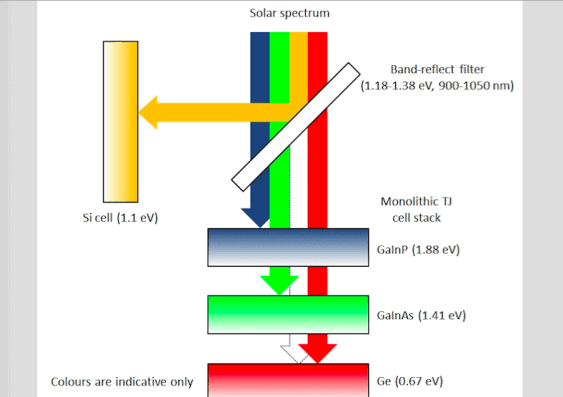A University of NSW team led by Professor Martin Green and Dr Mark Keevers (pictured below) has pushed sunlight-to-electricity conversion efficiency to 34.5% – establishing a new world record for unfocused sunlight.

Solar energy efficiency has gone up significantly in recent years, while prices have gone down dramatically making solar energy more and more plausible as a global renewable solution for energy. But in order for it to be truly viable, we need to push the limits of efficiency even more.
“This encouraging result shows that there are still advances to come in photovoltaics research to make solar cells even more efficient,” said Keevers. “Extracting more energy from every beam of sunlight is critical to reducing the cost of electricity generated by solar cells as it lowers the investment needed, and delivering payback faster.”
They achieved this efficiency on a 28-cm2 four-junction mini-module embedded in a prism. The prism splits the light into four bands, allowing the system to harvest more energy from the Sun. Of course, this is a bit “cheating”, because you’re not going to use a prism for solar panels on your house, but at the very least it’s a proof of concept which can help in future development. It’s not implausible to split solar light into several energy bands before harvesting it.

“What’s remarkable is that this level of efficiency had not been expected for many years,” said Green, a pioneer who has led the field for much of his 40 years at UNSW. “A recent study by Germany’s Agora Energiewende think tank set an aggressive target of 35% efficiency by 2050 for a module that uses unconcentrated sunlight, such as the standard ones on family homes.
“So things are moving faster in solar cell efficiency than many experts expected, and that’s good news for solar energy,” he added. “But we must maintain the pace of photovoltaic research in Australia to ensure that we not only build on such tremendous results, but continue to bring benefits back to Australia.”
In terms of overall solar efficiency (including concentrated arrays), Soitec & Fraunhofer Institute have created 46% efficient solar cells, while Sharp came in at 44%. 22.1% Panasonic solar modules hold the commercial solar module efficiency record.






